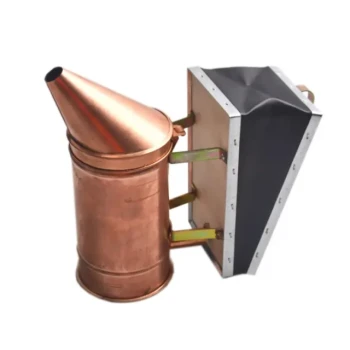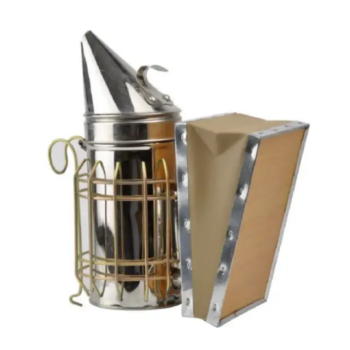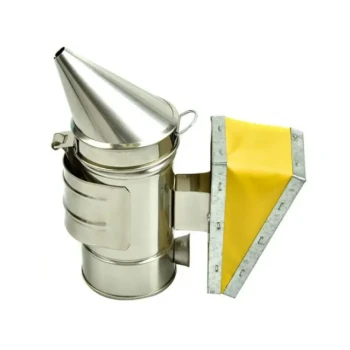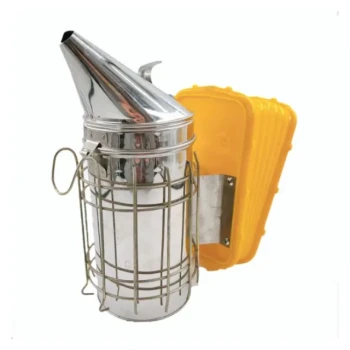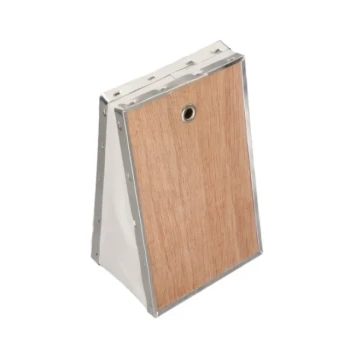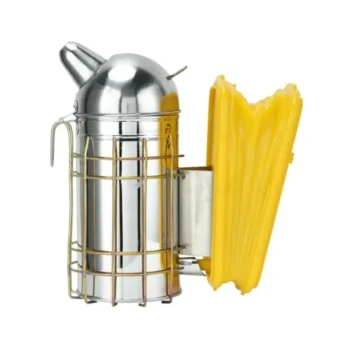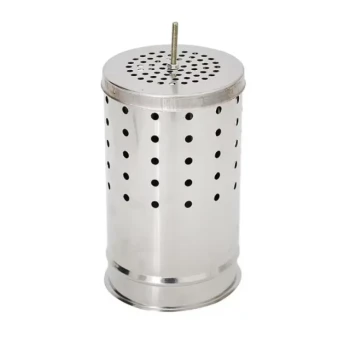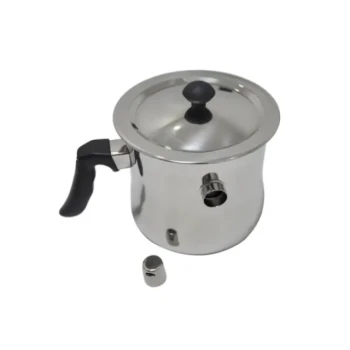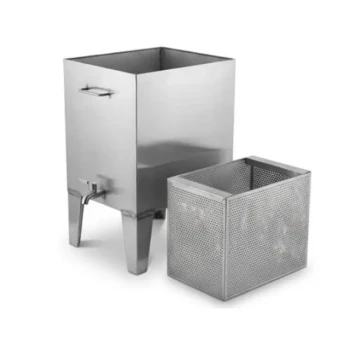Beekeepers use smoke from a variety of natural, slow-burning materials. The specific fuel chosen often depends on what is readily available, but common choices include pine needles, untreated burlap, wood shavings, and commercial fuels made from compressed cotton or pulped paper. The key is to produce a cool, white smoke that is gentle on the bees.
The most effective smoker fuel is not a single specific material, but anything that is natural, untreated, and slow-burning. The goal is to generate cool, thick smoke to calm the bees, not hot, thin smoke that can harm or agitate them.
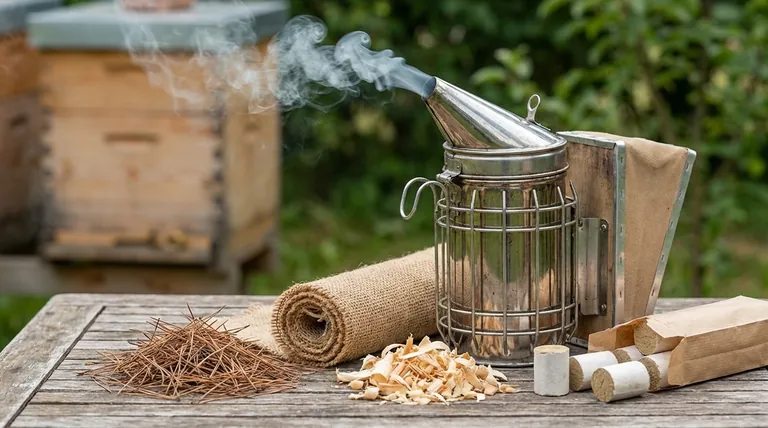
The Principle Behind Smoking Bees
To choose the right fuel, you must first understand why smoke is used at all. It is not a tool to harm or scare bees, but rather a way to gently manipulate their natural instincts.
Masking the Alarm Pheromone
When a bee feels threatened or stings, it releases an alarm pheromone (primarily iso-pentyl acetate). This chemical signal alerts other bees in the colony to a potential danger, triggering a defensive response.
Smoke effectively masks this pheromone, interrupting the bees' primary channel for communicating danger. This prevents a widespread defensive reaction and keeps the colony in a calmer state.
Triggering a Survival Instinct
Smoke also triggers a primal instinct related to forest fires. When bees detect smoke, their immediate response is to prepare for the possibility of abandoning their hive.
To do this, they begin to gorge on honey, loading up on food reserves for the journey. A bee with a full stomach is physically less able to flex its abdomen to sting and is generally more docile and preoccupied.
Choosing Your Smoker Fuel
The best fuel is one that meets three critical criteria: it is natural, it smolders slowly, and it produces a cool, dense smoke.
Readily Available Natural Fuels
Many beekeepers prefer to use materials found in their local environment. These are effective, sustainable, and free.
Examples include dry pine needles, untreated burlap or cotton rags (like old denim), wood shavings (not sawdust, which burns too fast), dried leaves, and even dried, broken-up corn cobs.
Commercial and Specialized Fuels
For convenience and consistency, many beekeeping suppliers sell processed fuels. These often come in the form of compressed cotton fibers or pulped paper pellets.
Some research has also shown that specialized fuels can have an enhanced effect. Pellets made from dried female hop flowers release a sedative compound that is particularly effective at calming a colony.
Understanding the Trade-offs and Pitfalls
Using the wrong fuel or the wrong technique can be ineffective at best and harmful at worst. Objectivity requires acknowledging these risks.
The Danger of Hot or Toxic Smoke
You must never use materials that can release harmful chemicals. This includes plastic, synthetic fabrics, pressure-treated wood, painted or stained materials, and cardboard with excessive glue or colored inks.
These substances can produce toxic fumes that will harm or kill your bees and can contaminate the honey and wax in the hive.
Avoid Green or Wet Materials
Using fuel that is not completely dry is a common mistake. Green or damp materials produce a hot, steamy smoke that can agitate bees and even burn their wings.
The goal is always a cool, white, pleasant-smelling smoke. If your smoke is hot, acrid, or bluish, your fuel is either burning too hot or is not the right type.
The Risk of Over-Smoking
Smoke is a tool, and like any tool, it can be overused. Puffing excessive amounts of smoke into a hive is stressful for the bees.
It can cause the queen to stop laying, disrupt colony communication for an extended period, and even leave a smoky taint in the honey. Use just enough smoke to keep the bees calm—typically a few puffs at the entrance and a few under the lid.
Making the Right Choice for Your Apiary
Your decision should be based on your beekeeping goals, your local environment, and your preference for convenience versus cost.
- If your primary focus is cost-effectiveness and sustainability: Use readily available natural materials like dry pine needles, untreated cotton fabric, or wood shavings from your property.
- If your primary focus is convenience and consistent performance: Purchase commercial fuels like compressed cotton or smoker pellets from a beekeeping supplier.
- If you are managing a particularly defensive hive: Consider sourcing specialized fuels like hop flower pellets for their enhanced sedative properties.
Ultimately, mastering the smoker is less about a single "best" fuel and more about understanding the principles of producing cool, clean smoke to work in harmony with your bees.
Summary Table:
| Fuel Type | Examples | Key Characteristics |
|---|---|---|
| Natural Fuels | Pine needles, untreated burlap, wood shavings | Cost-effective, sustainable, produces cool smoke |
| Commercial Fuels | Compressed cotton, pulped paper pellets | Convenient, consistent, reliable performance |
| Specialized Fuels | Hop flower pellets | Enhanced sedative effect for defensive hives |
| Fuels to AVOID | Plastic, synthetic fabrics, treated wood | Produces toxic fumes that harm bees and contaminate hive products |
Equip Your Apiary with Reliable Beekeeping Supplies from HONESTBEE
Mastering your smoker technique is essential, but it starts with having the right, high-quality equipment and fuel. For commercial apiaries and beekeeping equipment distributors, consistent performance is key to productivity and hive health.
HONESTBEE supplies a wide range of durable beekeeping supplies through our wholesale-focused operations, including reliable smokers and safe, effective fuels. Let us help you optimize your operations with equipment you can trust.
Contact HONESTBEE today to discuss your wholesale supply needs and ensure your beekeeping success.
Visual Guide
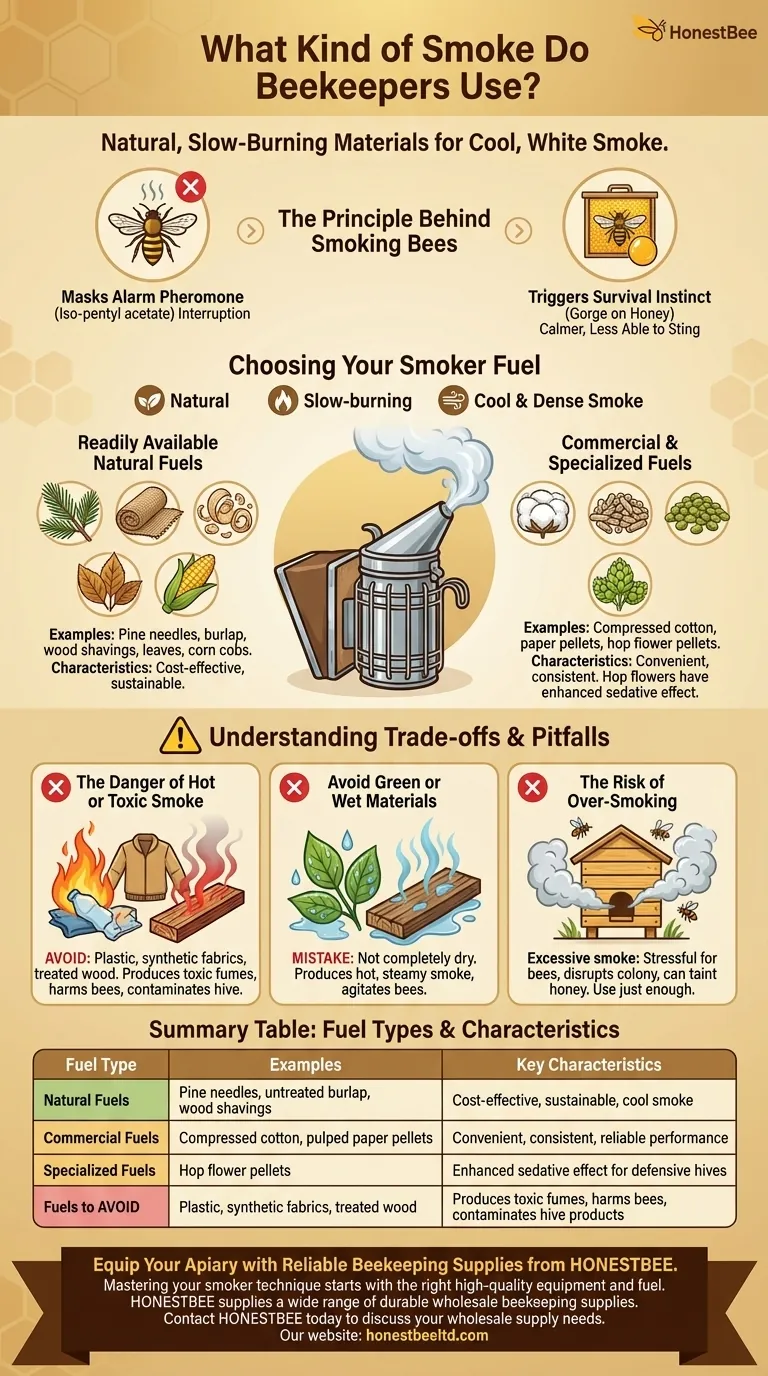
Related Products
- 54-Piece Smoker Fuel Pellets for Beekeeping Beehive Smoker Fuel
- Premium Traditional Copper Bee Smoker with Bellows
- Economy Galvanized Beekeeping Honey Bee Smoker for Wholesale
- Stainless Steel Honey Bee Smoker Hive and Honeycomb Smoker for Beekeeping
- Miniature Stainless Steel Bee Smoker for Beekeeping
People Also Ask
- What is best to burn in a bee smoker? Master the Layered Fuel Technique for Calm Hives
- What is used in a bee smoker? Master the Best Fuels for Calm, Healthy Hives
- What are important considerations when choosing smoker fuel? A Guide to Safe, Effective Beekeeping
- What to put in a bee hive smoker? A Guide to Natural, Calming Fuels
- How should you start the fire in a bee smoker? A Step-by-Step Guide for a Calm Hive

